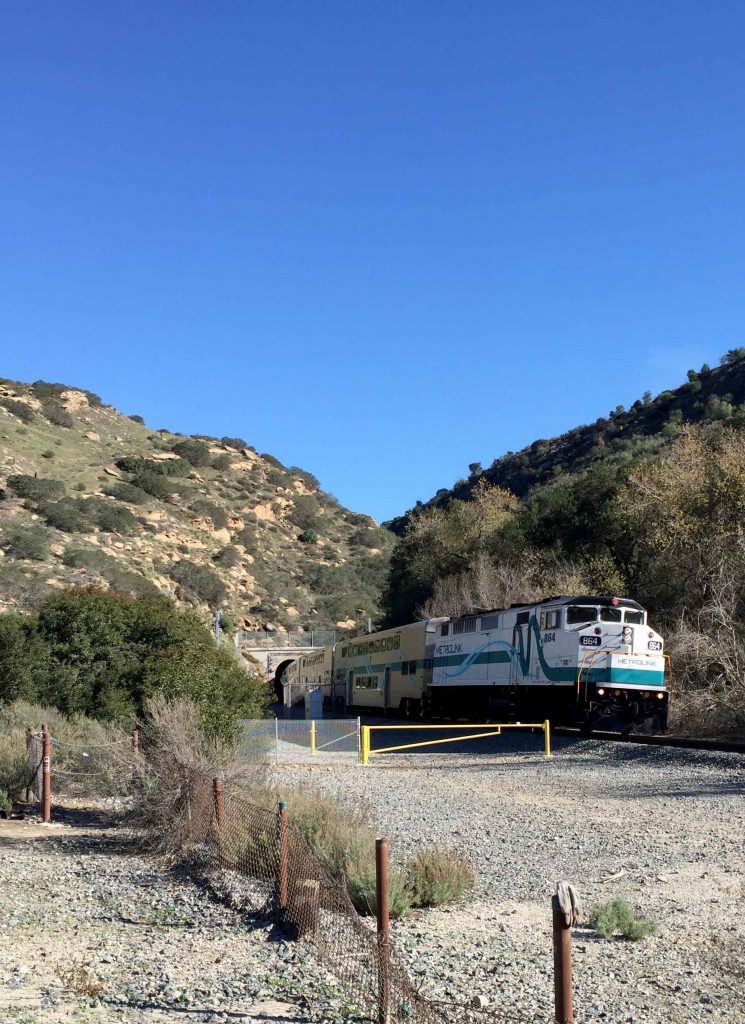
Ventura County, CA — Ventura County plays a pivotal role in the movement of goods and passengers by rail across densely populated Southern California. With Asia as its largest importer, agribusiness in Ventura and nearby Santa Barbara counties is a driver for the regional economy, generating more than $6 billion in annual economic activity and employing over 45,000 workers.
Darren Kettle is executive director of the Ventura County Transportation Commission, an organization that manages projects and operations to ensure everything runs smoothly in this unique jurisdiction (which also owns Hollywood’s favorite rail line, one that has been featured in scores of movies and television shows).
How does rail serve the Ventura County community (passenger and/or freight)?
Kettle: Rail is a critical piece of Ventura County’s transportation network. Amtrak and Metrolink provide passenger service for the region’s residents, commuters and visitors. Metrolink’s Ventura County Line operates weekday commuter service between East Ventura and Los Angeles. Amtrak’s Pacific Surfliner serves Ventura County with 12 daily round-trips between San Diego and San Luis Obispo and Amtrak’s Coast Starlight, with service between Los Angeles and Seattle, stops in Oxnard and Simi Valley once a day.
The Union Pacific Railroad is the Class I freight carrier on the coast mainline through Ventura County and all the way along California’s Central Coast. Freight rail provides a prime intermodal link between the Port of Hueneme, the largest California seaport between Los Angeles and Oakland, and markets throughout North America. A 12-mile near-dock rail loop, the Ventura County Railway, connects the Port, Naval Base Ventura County and the industrial areas of south Oxnard to Union Pacific Railroad.
The Ventura County Transportation Commission owns the Santa Paula Branch Line and leases the line to the Fillmore and Western Railroad, which runs tourism excursion trains and a variety of movie, television and commercial shoots for the nearby Hollywood entertainment industry.

Railroads invest heavily in grade crossing safety, spending hundreds of millions of dollars each year to maintain crossings and support programs and initiatives, like Operation Lifesaver, related to grade crossing safety. What are some of your biggest public safety obstacles?
Kettle: Like many communities in Southern California, at-grade rail crossings are a major public safety concern in Ventura County. Oxnard’s Rice Avenue grade crossing, the site of a fatal Metrolink-truck collision in 2015, is a particular local priority. Fortunately, with the Ventura County Transportation Commission as the funding plan architect and with cooperation between the City of Oxnard, the County of Ventura and the California Department of Transportation, and the political leadership from Assemblymember Jacqui Irwin, funding has been identified to build the Rice Avenue Bridge over the Union Pacific tracks near East Fifth Street. This project will not only eliminate conflict between vehicles and trains at this critical location, it will also ease traffic and circulation issues that make this a challenging intersection.
How do you see both passenger and freight rail playing a part in Southern California’s Sustainable Community Plan?
Kettle: When it comes to achieving the greenhouse gas reductions outlined in SCAG’s Sustainable Communities Strategy, rail is an important tool in Southern California’s mobility toolbox. This is especially true in Ventura County where the low-density rural and suburban environment can pose challenges. Every local commuter who rides a passenger train to work is one less driver on the freeway. Every container of produce moved from the Port of Hueneme by rail means fewer trucks on the road.
To this end, VCTC recently worked with the Santa Barbara Council of Governments and the LOSSAN Corridor Authority to offer new commuter rail service on the Pacific Surfliner between Ventura and Santa Barbara Counties. With thousands of Ventura County residents making the daily trek to work in Santa Barbara, commuter bus – and now rail – provide more sustainable commuting options.
The Port of Hueneme is an active and successful seaport serving Ventura County and the greater Southern California region. What role may freight rail have in the port’s continued and future growth and development?
Kettle: The Port of Hueneme occupies an important niche in the movement of goods within Southern California, the United States and the world. The Port specializes in fresh produce, automobiles, bulk liquids, fish and “general cargo,” large items that cannot be shipped in containers. Many of these products require expedited or specialized handling. Freight rail is the crucial connection that moves these items from the Ventura County coast to markets across north America. As congestion has impacted the Southern California freeway system, rail provides a strategic and efficient link to regional distribution and processing centers in the state’s interior as well as to long-distance national rail corridors.


